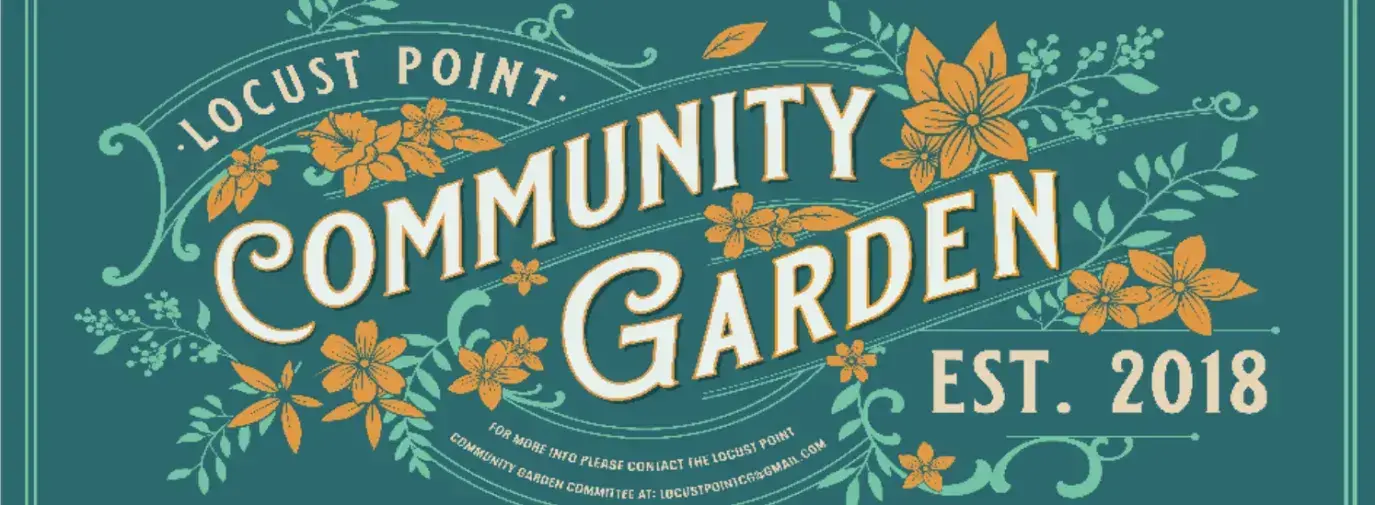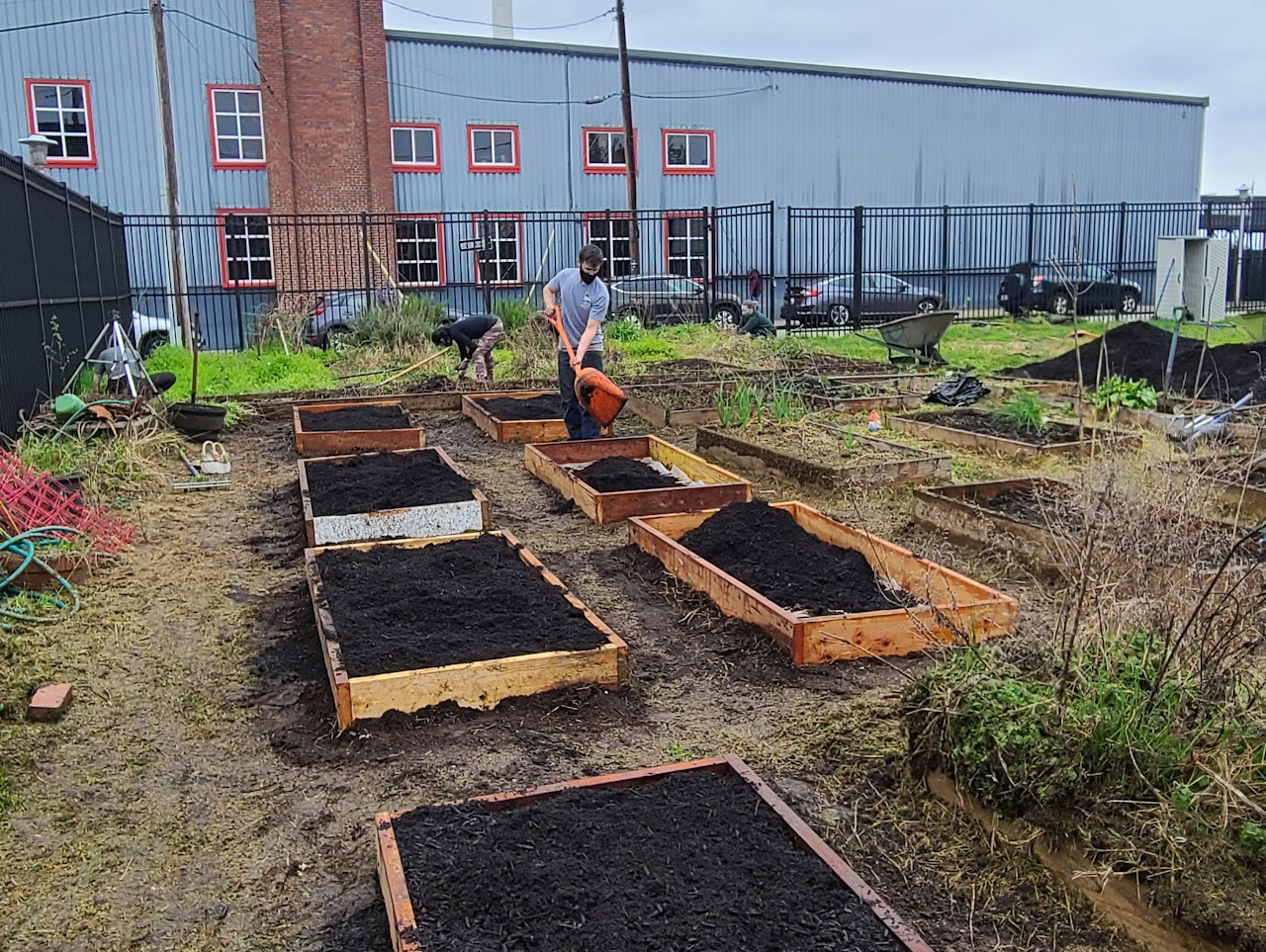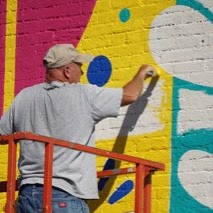
“Let’s reinvigorate this garden.”
Before head gardener Dave Ardnt peered between tall fencing, the Locust Point Community Garden sat in disrepair.
Started by a former-resident and Under Armour (UA) employee, UA initially granted the land to local employees for use and later opened to Locust Point residents in 2018. When the pandemic hit, the garden became home to overgrown weeds and rotting food.
Wisconsin raised, Ardnt moved to Locust Point in fall 2020 and longed for a slice of green amongst hard, grey concrete.
“I’d walk by this plot of land and see vegetables just kind of hanging there and rotting on the vine,” Ardnt said. “That was really kind of disturbing to me because I see all this stuff and hard work that people put in and nobody’s tending it at all.”
Ardnt and 13 others were granted stewardship and added 10 new plots in 2021, and by 2022 expanded another 20 plots.
Now, creeping vines, grand leaves, and vibrant flowers interlock through the fence of the Locust Point Community Garden. Between the flowers, fruits, vegetables, and trees, bees from the on-site hive gather pollen; butterflies feed on nectar; and gardeners wipe dirt off their pants.

Revitalizing the Garden with Sustainable Practices
US city planners love building concrete jungles. More likely than not, the most natural green a city kid ever sees are the weeds poking up from cracked sidewalks.
Community gardens change that, but they don’t sprout overnight.
As Baltimore industrialized, little space was set aside for greenery. Wetlands and streams were drained and paved over to make way for industry, and in their place the harbor was built.
The garden, located at 1134 Hull Street South Baltimore, required hard work to replenish the soil. Using sustainable practices, Ardnt hopes to counteract impenetrable city building. In an email correspondence, Ardnt wrote about the strict guidelines all gardeners and LPCG enjoyers follow.
“We do encourage using mulch and our compost mix (which we supply) and I never have seen anyone turn over their plot,” Ardnt wrote. “Some people do plant cover crops in the winter, while others plant cold tolerant plants such as garlic, onions, parsley, flowers, and cabbage.”
Rules and regulations for garden interactions are listed on the LPCG site. The garden has a clear no- tolerance policy for synthetic fertilizers and non-organic pesticides, vaping and smoking, or dumping kitchen waste.
The World Health Organization writes that pesticides have negative consequences for humans and animals. Using pesticides and synthetic fertilizers to preserve foods has acute and chronic health effects. In small-time operations such as the LPCG, cultivating a healthy garden to build a healthy community means creating and following necessary precautions.
Growing Neighborhood Recognition
From the beginning, Ardnt sought for the community garden to give the neighborhood what it needs. Beyond setting fruits and vegetables in baskets out front for the taking, he believes community gardens need to be a space for community building from the youngest residents to the oldest.
“We actually have a big dirt pile in the garden,” Ardnt says. “We’ve got kids, especially in the springtime, when we have get-togethers that are just playing in the dirt pile.”
Beyond playing in the dirt, the LPCG makes a point to teach biodiversity by hosting Girl Scout events and other public school teach-ins.
By centering the garden as a focal point in Locust Point, Ardnt believes it’s given people a true sense of community.
“You’ve got people with community,” Ardnt says. “They want to get together and have parties, get together and know their neighbors, spend time with other people, some people just want to be out in greenspace.”
Many are still dealing with the ramifications of forced isolation post-COVID. A 2023 study from the National Institute of Health reports that people are feeling lonelier now than before the pandemic.
Watching the LPCG thrive, Ardnt says that community gardens provide a sense of belonging and purpose that most didn’t know they needed.

A Tumultuous Future for Locust Point Community Garden
Like many community gardens around the country, Locust Point is facing opposition. As Under Armour plans to move its headquarters from Baltimore to Port Covington, MD, it’s selling much of its Baltimore land to developers — including the LPCG.
The news came as a surprise to Locust Point residents. Ardnt says although UA appeared willing to help relocate the garden, communication quickly disintegrated.
“It’s really a lot of frustration and anger and disappointment,” Ardnt says.
Calls and petitions have been placed, asking UA to consider donating the land to the neighborhood or city trusts like Baltimore Green Space.
Ardnt argues that to a large corporation such as UA, keeping the lot or donating it would have little impact on its long-term revenue.
Apart from being a social epicenter, LPCG is critical to the local ecosystem, making its permanence even more important to Ardnt.
“We’re surrounded by impermeable surfaces, and we’ve got bigger rain events, so we’re actually getting some flooding in our area,” Ardnt says. “The garden plays a vital role in stormwater retention and getting rid of the big flooding that could happen.”
While its future remains uncertain, its importance is clear. The Locust Point Community Garden plays a central role in the social and natural ecosystem of Baltimore harbor. Until Ardnt receives a notice of closure, the LPCG plans to remain a safe haven for the neighborhood.
Read Green America's Op-Ed Supporting Locust Point Community Garden.



